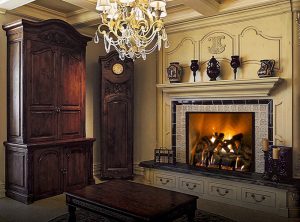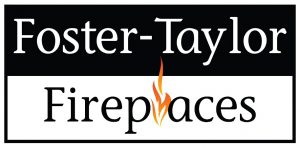When choosing a gas fireplace, you’ll encounter two main types of gas logs: vented and vent-free. While they may appear similar, these two options have distinct differences in how they function, how they impact room heat, and what kind of ambiance they create. Knowing the basics will help you make an informed decision and ensure the best fit for your home’s needs.
A gas fireplace operates using natural gas or propane, making it an efficient alternative to traditional wood-burning fireplaces. It adds both warmth and a decorative touch to any room. While wood-burning fireplaces have a nostalgic appeal, they are not the most effective at generating heat. Modern gas fireplaces, however, provide a more efficient heating option without the mess or maintenance of burning wood. With realistic-looking log sets, a gas fireplace can create a warm and inviting atmosphere that resembles the glow of a traditional fire.
Gas fireplaces eliminate much of the hassle associated with wood-burning options. There are no ashes to clean, no logs to chop, and no chimney to maintain. All you need is a gas line, and you can enjoy a fire with just the flip of a switch. Gas fireplaces also offer enhanced safety; without an uncontrolled flame, the risk of accidental fires is greatly reduced.
Gas fireplaces are available in two styles: vented and vent-free. Vented gas logs require a flue or chimney, as they emit carbon monoxide. Vent-free logs do not produce these emissions, allowing them to operate without a chimney and retain more heat within the room. Each type has specific gas log sets that are designed to work safely with the unit.
Vented gas logs are popular among homeowners who want the traditional look and feel of a wood-burning fire. These sets can be installed in an existing fireplace, making them a good choice for those seeking to upgrade to a more efficient option. Vented gas logs, however, do produce carbon monoxide emissions, so they must be used with an open flue or chimney. While this type of fireplace is not as efficient as vent-free options due to heat loss through the chimney, it provides a realistic flame that many find appealing. Vented gas logs are available in a variety of wood finishes, such as oak or birch, to complement your home’s decor. To maintain safety, it’s recommended to have a professional inspect the vented gas fireplace annually.
While vented gas logs add warmth, they are not typically used as a primary heat source. Their effectiveness depends on the size of the room and the amount of heat lost through the chimney. For smaller spaces, vented logs can provide adequate warmth, but larger rooms may require additional heating.
If efficiency is your priority, vent-free gas logs are the better option. These units do not require a flue or chimney, so the heat generated stays in the room. This makes them more efficient than vented sets, as more warmth is retained indoors. However, the flames of vent-free logs may not look as realistic as those of vented logs. Modern vent-free log sets are designed to provide an attractive flame effect, with finishes like Whiskey River and Sassafras adding a cozy feel to any space. Vent-free logs are also cost-effective, requiring only a gas line for installation.
Vent-free gas logs must be used carefully. They produce gases that do not vent outside, so it is crucial to follow safety guidelines. Many models come with oxygen depletion sensors, which shut off the unit if oxygen levels drop too low. It is recommended to open a window or door if the fireplace has been running for an extended period. As with any gas appliance, regular maintenance is essential, so consider an annual service check.
You can install vent-free gas logs in a vented fireplace. However, even though venting is not required, some heat efficiency may be lost due to the open damper. Keeping the chimney closed helps retain heat, but the vent-free logs won’t operate at their highest efficiency.
Ultimately, whether vented or vent-free gas logs are better depends on your needs. Vented logs offer a more realistic flame and are a good choice for upgrading an existing wood-burning fireplace. Vent-free logs are more efficient and serve as a practical secondary heat source. Both options make excellent additions to a home, providing warmth and ambiance in a convenient, low-maintenance package. Whether you prioritize aesthetics or efficiency, there is a gas fireplace setup that can create a cozy atmosphere in your living space.

